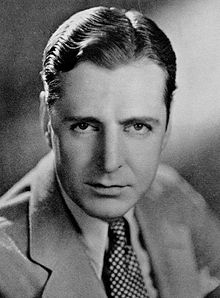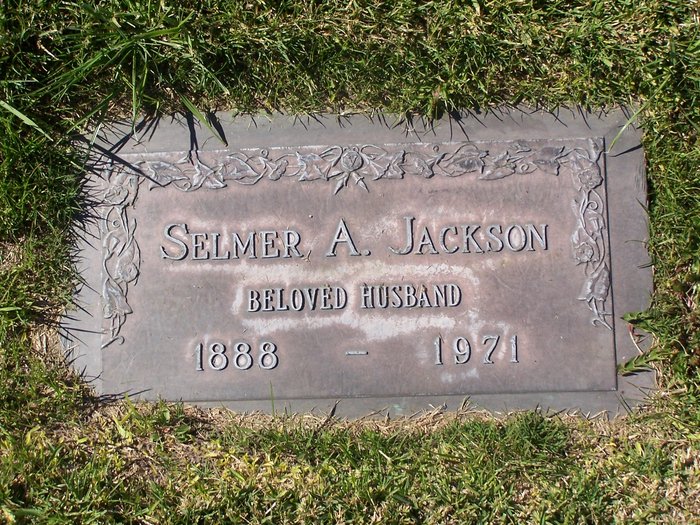Actor. He is best remembered for his portrayal of the headstrong C.B. Vincent in "Calling All Marines" (1939). After joining the Des Moines Stock Company, he began his career as a leading man on the stage. While performing in a production of "Wuthering Heights," he was discovered by director Samuel R. Bradley. Impressed by his dark good looks, slim physique, and distinctive voice, after taking notice of his potential, he arranged for him to begin a career in the film industry, beginning with him appearing under his supervision per a leading role in "The Supreme Passion" (1921). From there, he would go on to flourish as a notable character actor, appearing in over 400 features. Often typecast as husbands, fathers, relatives, wealthy bachelors, playboys, cowboys, detectives, reporters, sergeants, lieutenants, clergymen, white-collared workers, butlers, educators, historical or literary figures, city slickers, retail clerks, doctors, bartenders, soda jerks, bankers, businessmen, lawyers, politicians, judges, aristocrats, authority figures, and patriarchs. He appeared in such feature films as "Why Bring That Up?" (1929), "Madonna of the Streets" (1930), "Subway Express" (1931), "Three on a Match" (1932), "Picture Snatcher" (1933), "Blind Date" (1934), "Front Page Woman" (1935), "The Great Ziegfeld" (1936), "Hot Water" (1937), "Alexander's Ragtime Band" (1938), "Union Pacific" (1939), "Abe Lincoln in Illinois" (1940), "Buck Privates" (1941), "Dr. Kildare's Victory" (1942), "It Ain't Hay" (1943), "The Big Noise" (1944), "Thrill of a Romance" (1945), "Child of Divorce" (1946), "Sarge Goes to College" (1947), "Blonde Ice" (1948), "Tulsa" (1949), "No Man of Her Own" (1950), "Purple Heart Diary" (1951), "Sudden Fear" (1952), "Crazylegs" (1953), "Demetrius and the Gladiators" (1954), "Seven Angry Men" (1955), "Autumn Leaves" (1956), and "Hellcats of the Navy" (1957). On television, he appeared in various guest spots on such syndicated sitcoms as "The Living Christ Series," "The Bigelow Theatre," "Your Favorite Story," "The Ray Milland Show," "TV Reader's Digest," "The Man Behind the Badge," "Cavalcade of America," "Adventures of Superman," "This Is the Life," "Lux Video Theatre," "Navy Log," "The People's Choice," "Tales of Wells Fargo," "The Adventures of Rin Tin Tin," "The Ann Sothern Show," "Death Valley Days," "Schlitz Playhouse," "Riverboat," "General Electric Theatre," "Bronco," "Bonanza," and "The Alfred Hitchcock Hour." During his career, he was an honorary member of Actors Equity, was supportive of the Motion Picture and Television Fund, had been a member of the Screen Actors Guild, was a regular parishioner of the Lutheran church, was an active member of the Hollywood Republican Committee, was a commercial model for the Ford Agency, had been active within his local charters of the American Red Cross and the Boy Scouts, was a theatrical instructor for the Pasadena Playhouse, had been a celebrity spokesman for Folgers Coffee and Paper Mate Ballpoint Pens, had been a contender for the role of Rhett Butler in "Gone with the Wind", and he was married to mild-mannered housewife Estil S. Jackson (their union produced no children and ended upon her death in 1966). Following his 1963 retirement, he spent the remainder of his life living comfortably in the suburbs, devoting time to charitable and religious causes, until his death from the complications of a heart attack.
Actor. He is best remembered for his portrayal of the headstrong C.B. Vincent in "Calling All Marines" (1939). After joining the Des Moines Stock Company, he began his career as a leading man on the stage. While performing in a production of "Wuthering Heights," he was discovered by director Samuel R. Bradley. Impressed by his dark good looks, slim physique, and distinctive voice, after taking notice of his potential, he arranged for him to begin a career in the film industry, beginning with him appearing under his supervision per a leading role in "The Supreme Passion" (1921). From there, he would go on to flourish as a notable character actor, appearing in over 400 features. Often typecast as husbands, fathers, relatives, wealthy bachelors, playboys, cowboys, detectives, reporters, sergeants, lieutenants, clergymen, white-collared workers, butlers, educators, historical or literary figures, city slickers, retail clerks, doctors, bartenders, soda jerks, bankers, businessmen, lawyers, politicians, judges, aristocrats, authority figures, and patriarchs. He appeared in such feature films as "Why Bring That Up?" (1929), "Madonna of the Streets" (1930), "Subway Express" (1931), "Three on a Match" (1932), "Picture Snatcher" (1933), "Blind Date" (1934), "Front Page Woman" (1935), "The Great Ziegfeld" (1936), "Hot Water" (1937), "Alexander's Ragtime Band" (1938), "Union Pacific" (1939), "Abe Lincoln in Illinois" (1940), "Buck Privates" (1941), "Dr. Kildare's Victory" (1942), "It Ain't Hay" (1943), "The Big Noise" (1944), "Thrill of a Romance" (1945), "Child of Divorce" (1946), "Sarge Goes to College" (1947), "Blonde Ice" (1948), "Tulsa" (1949), "No Man of Her Own" (1950), "Purple Heart Diary" (1951), "Sudden Fear" (1952), "Crazylegs" (1953), "Demetrius and the Gladiators" (1954), "Seven Angry Men" (1955), "Autumn Leaves" (1956), and "Hellcats of the Navy" (1957). On television, he appeared in various guest spots on such syndicated sitcoms as "The Living Christ Series," "The Bigelow Theatre," "Your Favorite Story," "The Ray Milland Show," "TV Reader's Digest," "The Man Behind the Badge," "Cavalcade of America," "Adventures of Superman," "This Is the Life," "Lux Video Theatre," "Navy Log," "The People's Choice," "Tales of Wells Fargo," "The Adventures of Rin Tin Tin," "The Ann Sothern Show," "Death Valley Days," "Schlitz Playhouse," "Riverboat," "General Electric Theatre," "Bronco," "Bonanza," and "The Alfred Hitchcock Hour." During his career, he was an honorary member of Actors Equity, was supportive of the Motion Picture and Television Fund, had been a member of the Screen Actors Guild, was a regular parishioner of the Lutheran church, was an active member of the Hollywood Republican Committee, was a commercial model for the Ford Agency, had been active within his local charters of the American Red Cross and the Boy Scouts, was a theatrical instructor for the Pasadena Playhouse, had been a celebrity spokesman for Folgers Coffee and Paper Mate Ballpoint Pens, had been a contender for the role of Rhett Butler in "Gone with the Wind", and he was married to mild-mannered housewife Estil S. Jackson (their union produced no children and ended upon her death in 1966). Following his 1963 retirement, he spent the remainder of his life living comfortably in the suburbs, devoting time to charitable and religious causes, until his death from the complications of a heart attack.
Bio by: Lowell Thurgood
Family Members
Advertisement












